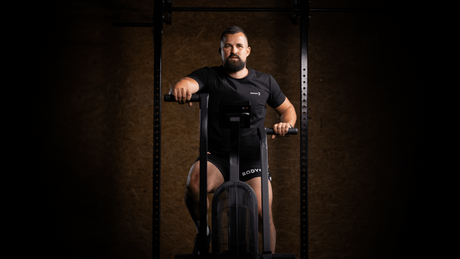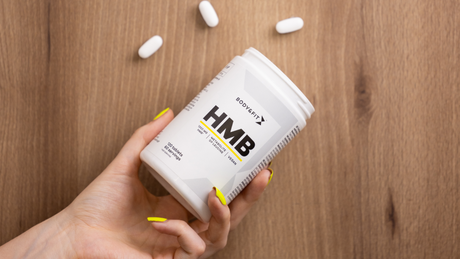Before we get into the blog, let me introduce myself: my name is Shelly, and I am a personal trainer and online fitness coach. Today, I’ve teamed up with Body&Fit to put together our guide to staying inspired and motivated on your journey to find your fit. I’m an expert in physique transformations and have spent over 5 years working with my clients on a wide range of different body shapes and goals. I have extensively studied this subject as well, with a Master’s degree in Human Movement Sciences and am always learning more from my clients along the way.
In this blog, I will take you through what it really means to find your fit and the things you can do to support your mindset and training on your health & fitness journey. Remember, ‘fit’ is not a one size fits all. It’s unique to you. So, whatever your goals, you can apply all these tips to your version of ‘fit’ and get started on the things you want to achieve.
What does it mean to find your fit?
Fit is a state of being, not just how your body looks. It can mean different things for each individual and can be achieved in many different ways. For one, fit can mean achieving a particular yoga hold. Another person may see it as running a marathon in under three hours. For some, fit can quite simply mean eating healthier or feeling comfortable in their own skin. Body&Fit and I champion anyone that wants to explore the world of health, fitness and nutrition, be it through a new activity, sport, goal, mindset or supplement. It doesn’t matter your level or what you want to achieve — it’s always possible to find your fit.
What does ‘fit’ and staying healthy mean to you?
The first step to finding your fit is to define what ‘fit’ means to you. Do you want to be strong, flexible, fast, feel good in your body or just enjoy being healthy and active? Once you know what you want to achieve, you can formulate it into a SMART goal.
This stands for:
Specific
Make your goal as specific as possible. Do you want to become stronger? How strong? 50 kg squat? 100 kg deadlift? By making your goal specific, it becomes more realistic and easier to plan out how you’re going to achieve it.
Measurable
Any goal needs to be measurable in order to track progress. Running, for example, is easy to measure. If you want to increase your 5K run speed, you simply time how long it takes and try to go faster the next time. If we don’t know how we’re doing, progress can become static, making it harder to get to the next level.
Attainable
Setting unrealistic goals is setting yourself up for failure. Start small and build your way up. It’s not realistic to lose 10 kg in one month, for example. When you start off with a goal like that, it can be demotivating when you don’t achieve it. Start by losing 1 kg. When you’re successful, repeat the process until you lose all the weight you had in mind.
Relevant
Your goals should align with your values and long-term objectives. Ask yourself why this goal is important to you and how it will contribute towards your broader life goals. If it isn’t clear, take the time to really think about why you want to achieve a specific goal.
Time-based
Giving yourself a time frame to achieve your goal can help you prioritise and stay motivated. It’s something to look forward to and focus on. If you don’t make it in time, ask yourself why. Your time frame might have been unrealistic, you may not have committed enough to it, or there have been some unexpected roadblocks.
When I first started training, I wanted to feel strong and energized. I was tired of being exhausted all day, being weak and insecure about my body. I started running and doing workouts at home. Soon, I discovered that running was not for me and quickly fell in love with strength training. One of my first goals was to be able to perform an unassisted chin up. I kept trying, and when I eventually did it, all I wanted was to be able to do more. Now, several years later, I can do weighted chin ups for multiple reps. If I wanted to do this at the beginning of my journey, I would’ve quickly been demotivated and probably would’ve quit.
I figured out that my fit is not in running, but in feeling strong and confident through strength training. Everyone sees fit differently. Think about what it means to you and have a go at setting your own SMART goal.
Why are your health & fitness goals important for you?
Once you have a clear goal set, it’s important to know why you chose it. Do you want to lose weight? Okay, but why? Will it give you more confidence? Is it for health reasons? Or, do you just want to wear your favourite jeans again? Think about how it will feel when you achieve your goal. Will you be happier, more active, enjoy the little things more?
It’s easy to set a goal based on looks, but finding your fit is about more than this. I wanted to get a sixpack because I thought it would bring me more happiness. Once I got that sixpack, I realised that it didn’t really make me that happy. I had to lower my body fat percentage, which meant training hard and being in a calorie deficit for a prolonged time. I may have looked really fit, but I didn’t feel it. Most of the time, I was hungry, tired, and irritable. That’s not how I would describe feeling fit.
Nowadays, I may have a bit more body fat, but I feel fitter than ever. I walk every day, eat nutritious foods and take my Body&Fit supplements when needed. I still train hard, but make sure to take care of my mindset by meditation and yoga. This is what fit means to me. Being able to get the most out of life. A certain look, like a sixpack, is not at all necessary to find that fittest version of you.
How are you going to achieve your health & fitness goals?
So, we’ve defined your goal and why you want to achieve it. Now let’s look at how can you find your fit.
Imagine your goal is to be able to squat 100 kg. If that is your end goal, you also want to define your starting position. If you are new to the gym, then you first need to learn how to properly squat. If you already squat with 70 kg as a working weight, then 100 kg is not that far away. So, look at where you are now and then look at what steps you need to take to get to your goal.
How often do you want to train? How hard do I need to train? What do I need to eat? What about my recovery? Do I need someone to help me? Are there other things I need to achieve my goal? These are all questions you can ask yourself before you set out on your journey.
Make a plan that works for you and that fits your lifestyle. In the ideal situation, you might want to train 5 days a week, but if your schedule doesn’t allow it, you are setting yourself up for failure. So, make a plan that is realistic and that you can stick to.
How to stick to your health & fitness plan
Once you have a solid plan in place, it’s time to execute it. This is easier said than done, so I’ll give you some of my top tips to stick to your plan and really achieve your fit!
Set out smaller goals on the way to your main goal
This is going to be a journey, so a good thing to do is literally draw out the path you’re going to take. Get a blank piece of paper and draw yourself in the lower left corner and your goal in the upper right corner. The aim is to map out smaller goals in between. If you want to squat 30 kg, the first step can be ‘learn how to squat’, then ‘squat with a barbell’, followed by ’10 kg squat’ etc. This can really help you stay motivated and on the right track.
Reward yourself
Often, we postpone rewarding ourselves until we get the big goal done, but the smaller goals are also worth celebrating. After a week of completing all your workouts and sticking to your nutrition plan, reward yourself with a nice bath, a long walk in the park or a free day — whatever you like.
Get an accountability partner
Find a friend or a coach who’s happy to join your journey and speak about your goals. It helps to know you are not alone, especially when you feel less motivated.
Embrace the process
There will always be hard times. Times you feel tired, when you’d rather sit on the couch, or feel stressed from a long day at work. Discipline is something you can train and get better at. Remember your long-term goal and how you will feel when you reach it.
The most important thing about finding your fit is to just go ahead and start. Make that first step, try that yoga lesson, go for a run, do your first squat, eat more fruit… Whatever falls in line with your goal — go for it. I know you’ve got it in you to become the fittest version of you!
About Shelly
Shelly is a personal trainer and online coach with a background in human movement sciences. She has learned the craft of fitness coaching from a variety of perspectives, including coaching herself to a competition-ready physique; coaching others with a range of goals and skill levels; and completing multiple courses on exercise and nutrition.
“Body&Fit has supported me from the very beginning of my health and fitness journey. There is still a lot to learn in the world of sports nutrition, and it gives me great pleasure to pass on my knowledge to you, the Body&Fit community of go-getters and fit seekers. I’ll be back with more articles soon, so keep a look out for those and make sure to follow me and check out my website for even more advice, workouts and inspiration. You can also keep an eye out for my workout, recipe and advice content on social @bodyandfit_official”.
Instagram: @ShellyWubbe
Website: Shelly Wubbe | Strength training and mindset coach for women (growcoach.nl)



